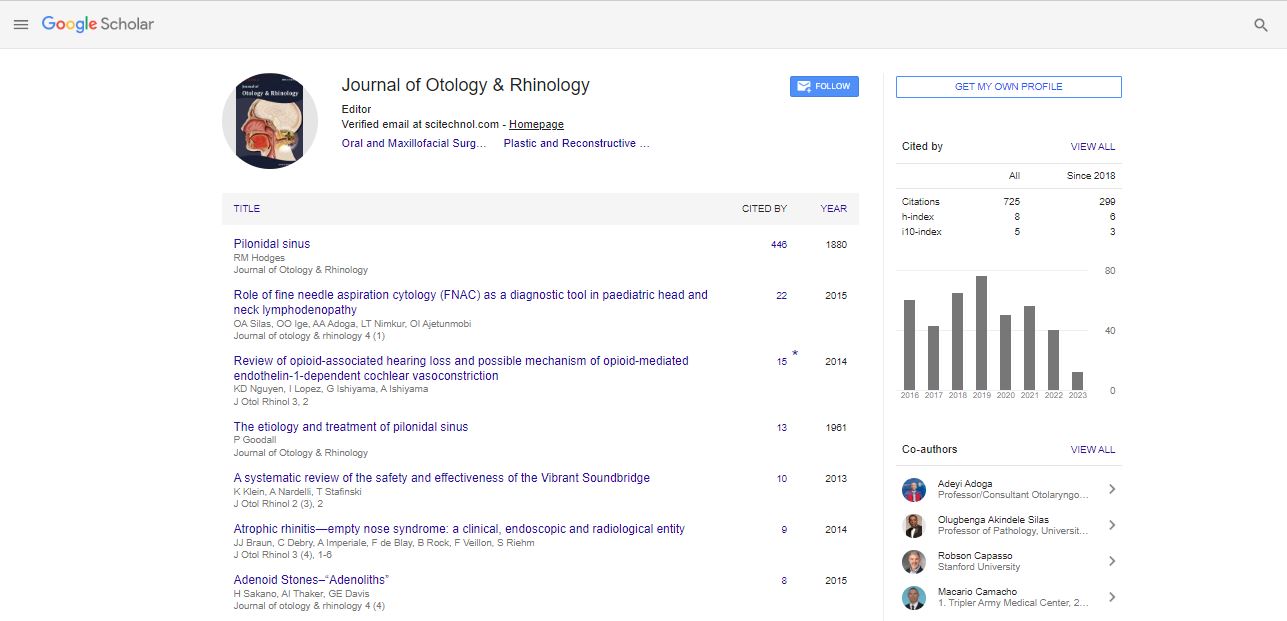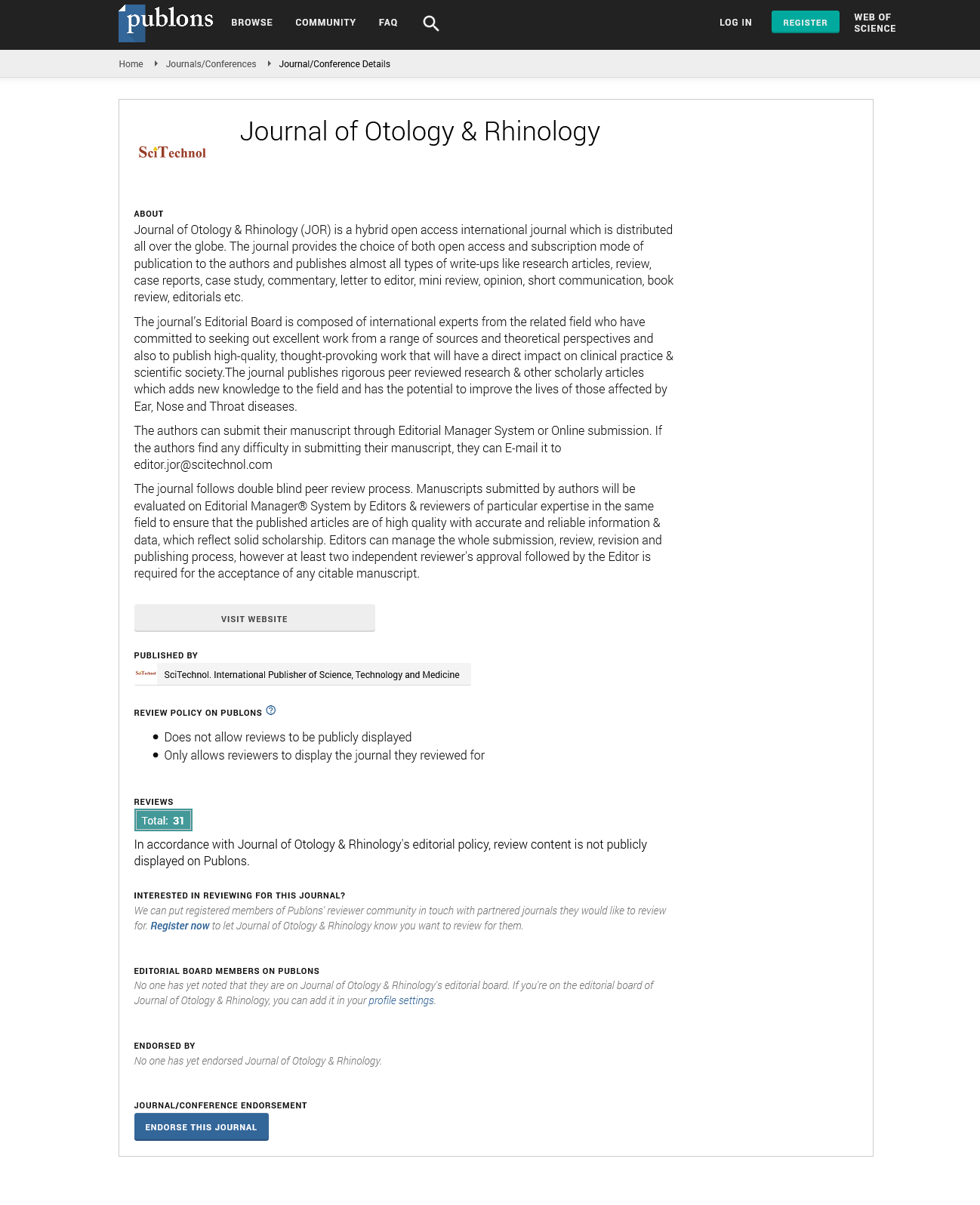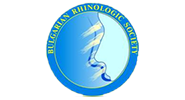An updated review of DISE
Alessandro Bucci
Hospital of Senigallia, Italy
: J Otol Rhinol
Abstract
Obstructive sleep apnea (OSA) is characterized by intermittent, repeated upper airway narrowing or obstruction occurring during sleep. Most authors agree that rigorous patient selection is logical and mandatory. Successful surgical treatment of OSA is based on the accurate identification of the pattern of airway obstruction and targeted, effective treatment. Nevertheless, surgical results in OSA vary greatly, whatever the surgical technique or site treated. For many years, the primary surgical treatment for obstructive sleep apnea was soft palate surgery, and this worked well for patients with blockage of breathing in the palate region alone. Unfortunately, many patients also appear to have blockage of breathing in the tongue region, and multiple procedures have been developed to address this in the hope of improving surgical outcomes. DISE (Drug induced sleep endoscopy) was introduced almost two decades ago and used extensively since the 2000s. Nevertheless, there are still limited data about the real role of sleep endoscopy in obstructive sleep apnea syndrome. DISE offers a unique structure-based assessment of the airway, compared to other commonly-used evaluation techniques. It mimics sleep in order to observe the upper airway on flexible endoscopy. Because surgical procedures are ultimately directed at specific structures, DISE may improve procedure selection and outcomes. DISE involves a certain number of limitations: natural sleep is not precisely reproduced, the anesthesia protocol is not standardized, and there is no gold-standard validation. Classification is imperfect, indications remain to be standardized. Despite the lack of standardization in clinical examinations, the type of drugs used for sedation and the classification system used, the results obtained till date favor the inclusion of DISE in the investigation of obstruction sites in patients with OSA.
Biography
Alessandro Bucci pursued his PhD (Rhinology and Rhino-Allergology) in 2006 at UCSC (Catholic University), Rome (Italy). He completed his Residency in Otolaryngology- Head and Neck Surgery at UCSC - Gemelli Hospital in Rome. His fellowship credentials include: Fellowship in Otolaryngology in Spain (University Hospital, Cadiz); Fellowship trained in Facial Plastic Surgery (AMC) and OSAS (Sint Lucas Andreas Hospital) in Amsterdam, The Netherlands; Facial Plastic Surgery (Calixto Garcia University Hospital), Havana, Cuba. He is currently the Head of Sleep Apnea Center and Rhinology/Rhino-Allergology Center in the Otolaryngology Department of ASUR Marche AV2, Senigallia, Italy. He is an International Faculty Member of the XXXV Pan-American Congress of Otorhinolaryngology 2016, Cuba. He has been the past Director of the 1st International Conference on Rhinology and Rhino-Allergology; 5th Bulgarian Italian Rhinology Meeting, 2016 Senigallia (Italy). His credentials include: University Professor at the Marche Polytechnic University, Ancona, Italy; International Faculty Member of the VI Bulgarian Italian Meeting of Rhinology, Medical School: Catholic University (UCSC) of Rome; He served as Reserve Medical Officer of the Italian Navy. His research focuses on Rhinology/Rhino Allergology, Sleep Apnea/OSAS. His main interest include: humanitarian and international outreach. He served as: Vice-President of the National Association of Tracheotomized patients- ONLUS ( nonprofit organization of social utility); Member of the ERS (European Rhinologic Society).
E-mail: drbucci@libero.it
 Spanish
Spanish  Chinese
Chinese  Russian
Russian  German
German  French
French  Japanese
Japanese  Portuguese
Portuguese  Hindi
Hindi 


